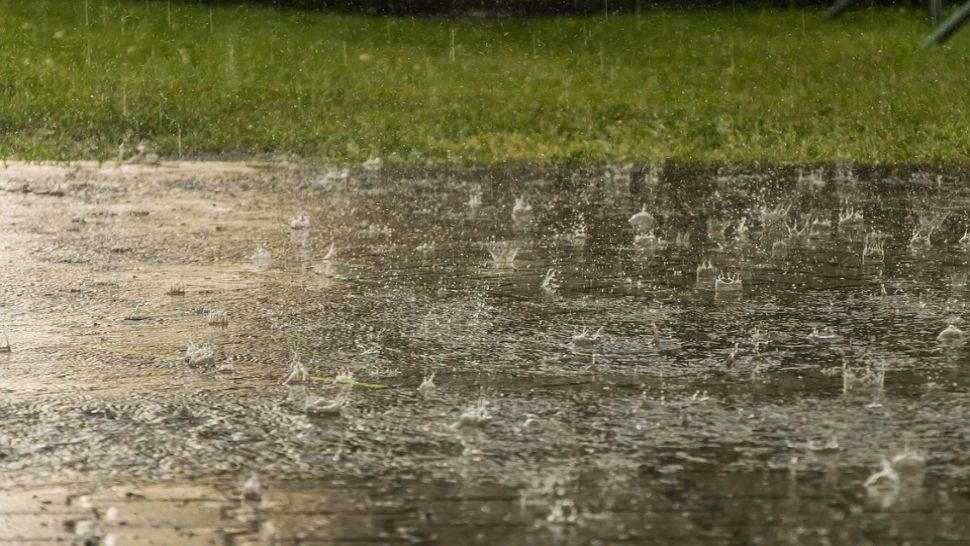It's been a hot summer for us overall, but a couple of chilly nights earlier this week set the stage for a few brief lake effect rain showers.
Lake effect season for the Rochester area begins in the Fall, but it's not uncommon to see a few localized, short-lived rain showers when the overnights and early mornings are chilly in August.
We’ve already had two mornings this month that featured these spotty morning showers.
Early season lake affect is on and off as we are still in the summer season, and warm weather will likely continue to be on and off into September and perhaps even October.
Lake Ontario surface temperatures are quite warm this time of year, and this year, maybe more so with July being a top 3 warmest of all time. Near shore temperatures are well into the 70s from the latest satellite estimated observations.
The real lake effect season can begin as early as mid-October, but is more likely to start in November when cold polar air starts pouring out of Canada and into Western New York.
October and November lake effect usually fall as mixed precipitation. The reason is that Lake Ontario is still warm, and the polar air masses that invade the region aren’t super cold.
So, we tend to see rain lakeside to ice pellets and wet snow mixed with rain farther inland. Early season snowfall accumulations are usually over the grassy surfaces at higher elevation in the Finger Lakes.
The two ingredients to get prolific lake effect snow are:
- A temperature difference between the lake surface water to 5,000 feet or higher at 13 degrees Celsius or greater
- A small amount of directional wind shear (less than 30 degrees from the surface to about 5,000 feet, and less than 60 degrees from the surface to about 9,000 feet). In other words, this means winds that do not change much direction from the surface up to between 5 to 10,000 feet are the best for lake snow development.
An upper low to our northwest will then provide the cyclonic and upward motions necessary to get the process rolling.
Once that low passes to our northeast, lake effect winds with increased wind shear cause it to tear apart, and drier air also shuts the process down.
We tend to get our biggest lake snow events when arctic air invades the region. You’ll usually hear about the circumpolar vortex a few times each winter. This isn’t a recent term, it’s one that has been taught in meteorology classes for years and years.
This radar image shows heavy lake snow off the east end of Lake Ontario and south of Buffalo. We were likely seeing a few flurries here in metro Rochester from the Lake Erie band.
Arctic air tends to be quite dry, but you’ll get the largest temperature differences between the lake water and the air 5 to 10,000 feet up in the atmosphere. The lake adds the moisture necessary to get the process going.
The biggest single day lake effect snow event I can remember occurred on March 6, 1999. We received over 18 inches of snow on that Saturday. Two days prior on March 4, 1999, we received over 22 inches of (synoptic) snow from a low pressure system.
The streets were a mess with so much snow over this three day period. I remember city trucks being filled with snow by front end loaders to be driven downtown and dumped over the bridges into the Genesee River.
The last two columns show record snowfall for Rochester on March 4 and 6 of 1999.
You will often hear us talking about a brief burst of heavy snow when a cold front drops across Lake Ontario and energizes an existing single band of snow that is out over the middle of the lake.
These single bands often pummel the Tug Hill Plateau in Central New York for days at a time with 3 to 4 feet of accumulation in one snowfall event.
The rise in elevation from the lake plain to the Tug helps to boost rising motion in the atmosphere and adds significantly to snowfall rates per hour and snow totals.
The same thing also happens over the hills south of Buffalo. We do not live in a prime location in metro Rochester for the significant events they see in those two areas.
Thankfully for us, and for getting around, our lake effect events don’t last nearly as long.
We can also pick up accumulating lake effect from Lake Erie when winds are strong enough and aligned just right even here in metro Rochester.
Lake Erie snow bands have a much more significant impact on Wyoming and Genesee counties. Much of the lake snow the Bristol Hills receive also comes from Lake Erie.
The Lake Erie season tends to be much shorter than the Lake Ontario season because Lake Erie is shallow with large parts of it freezing up by late January. This did not happen last year due to a mild winter.
Lake Ontario is much deeper with only inlets and bays tending to freeze with lots of open water to work with. As Lake Ontario gets colder though, the lake effect season tends to diminish.
For now, while it’s still warm, we’ll see occasional spotty lake effect rain showers when the nights are chilly.
Enjoy the rest of summer and the warmth while we still have it.





